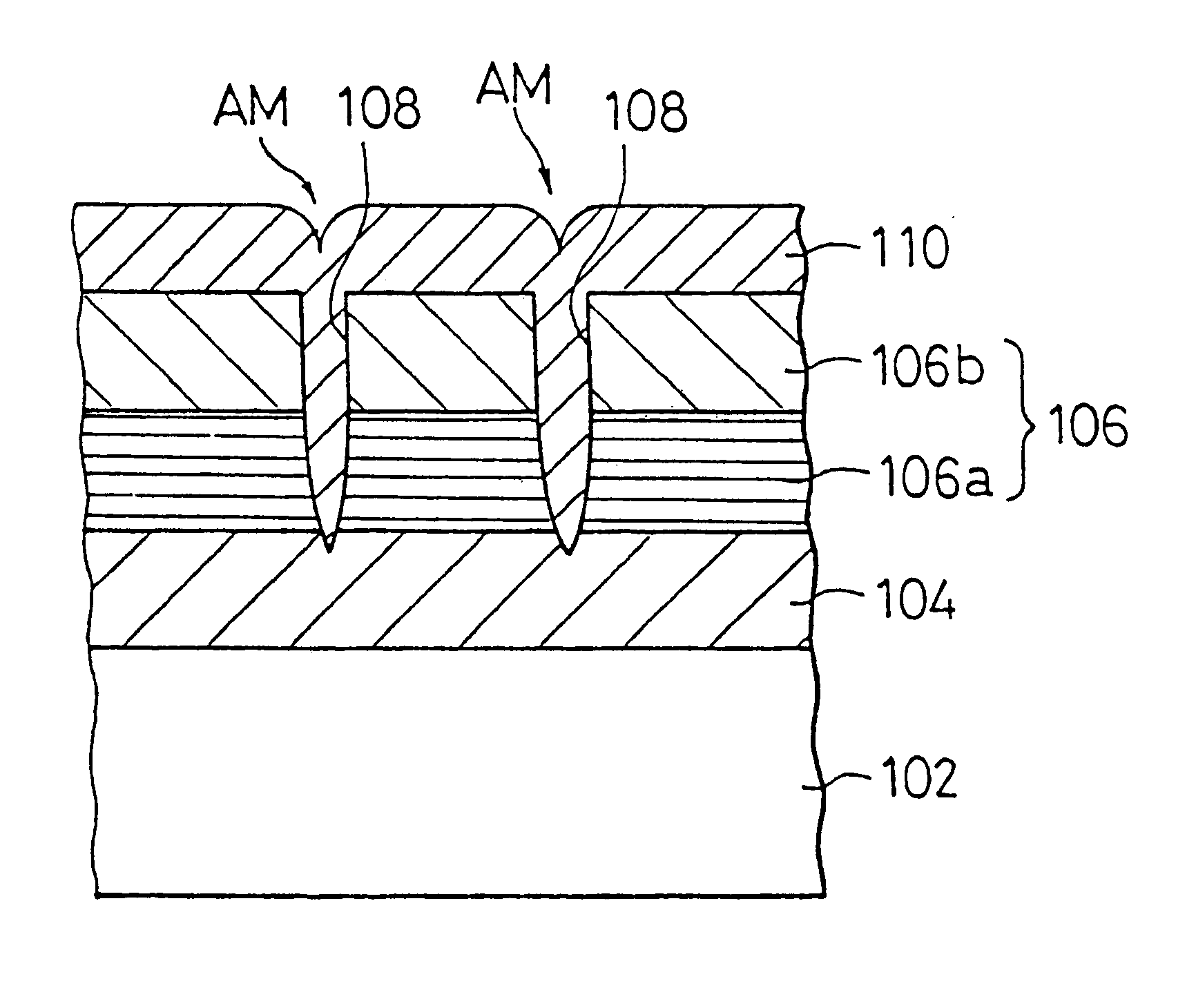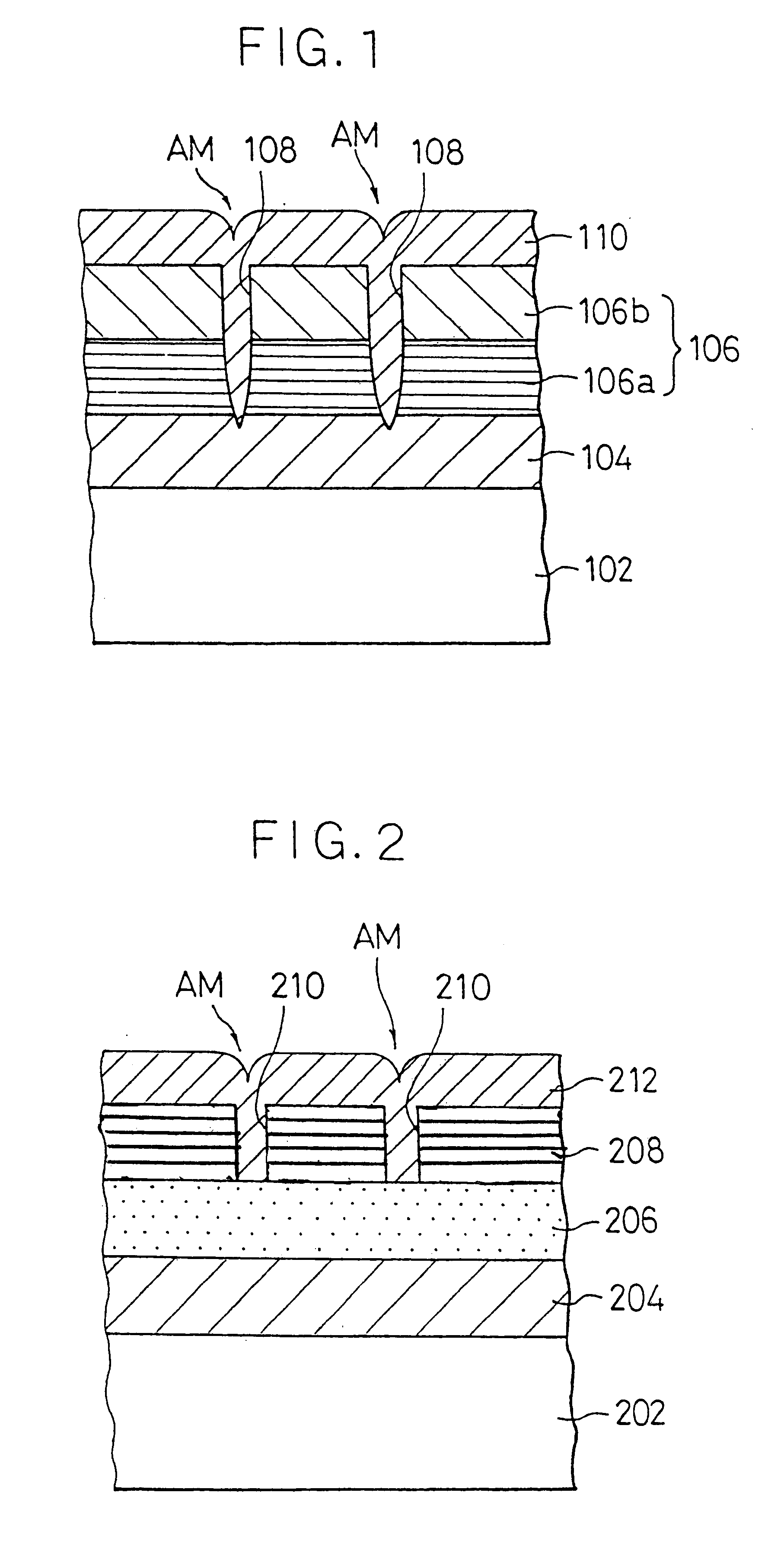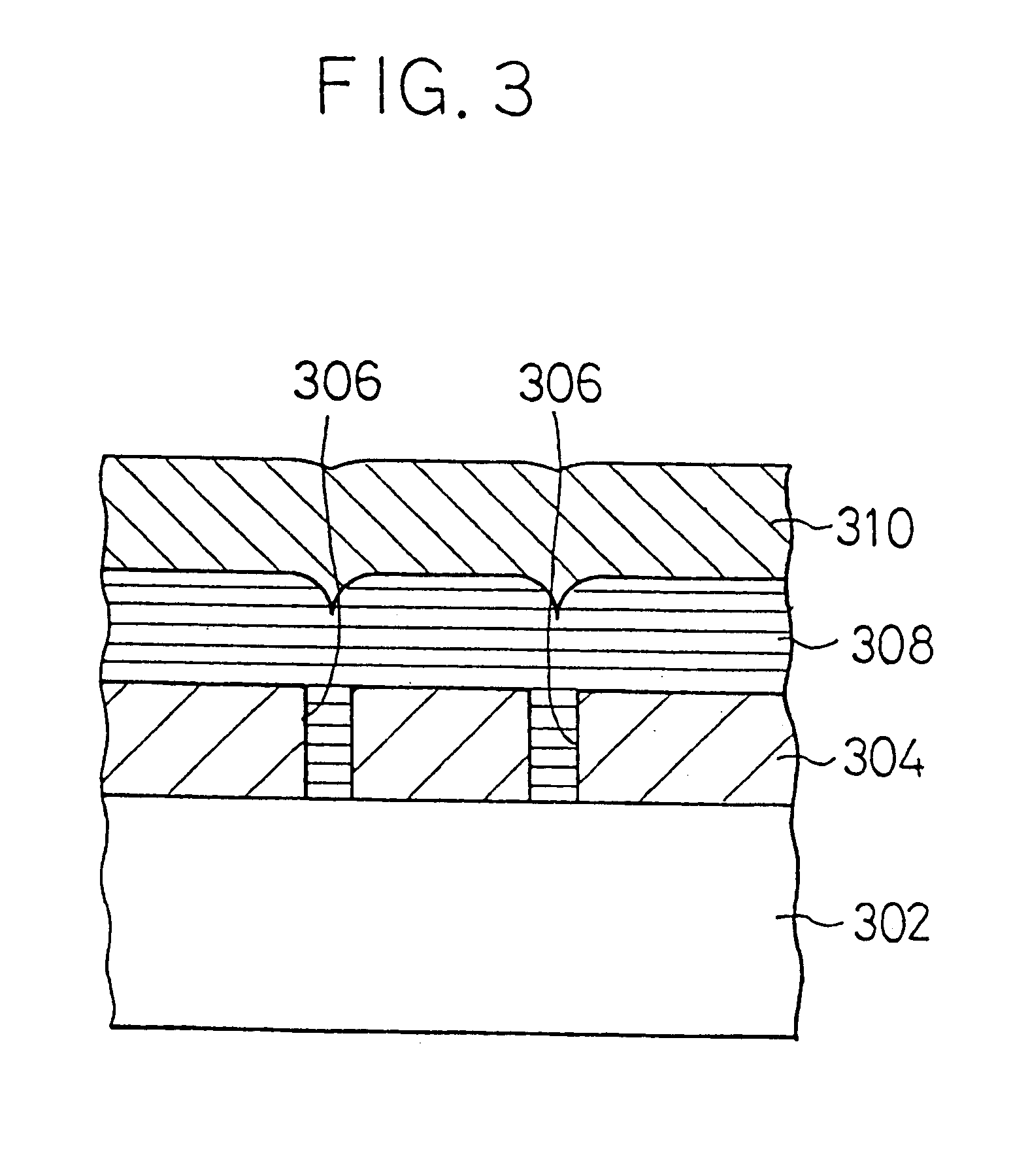Formation of an alignment mark in the surface of an aluminum layer
a technology of alignment marks and aluminum layers, which is applied in the direction of electrical equipment, semiconductor devices, semiconductor/solid-state device details, etc., can solve the problems of deterioration in the quality of oxide films, nor the destruction of alignment marks formed on the surface of al wiring layers, and achieve rapid and vigorous al-si chemical reactions. stable and stable
- Summary
- Abstract
- Description
- Claims
- Application Information
AI Technical Summary
Benefits of technology
Problems solved by technology
Method used
Image
Examples
first embodiment
FIG. 1 is a longitudinal sectional view showing the structure of an alignment mark AM according to the invention. This alignment mark AM is applied to the case where an Al wiring is formed over a field oxide film.
As shown in the figure, the first oxide film layer 104 is formed to cover the surface of a silicon substrate 102. This oxide film layer 104 is formed by oxidizing the surface of a cleaned silicon substrate 102 through a known ordinary oxidation treatment such as thermal oxidation with the help of an oxidation furnace, natural oxidation by leaving the silicon substrate in the high level clean room air for a predetermined period of time, or the like.
The second oxide film layer 106 is formed over the first oxide film layer 104. This second oxide film layer 106 consists of two oxide film layers 106a and 106b which are stacked up one by one on the film 104. Formation of these oxide film layers 106a and 106b may be achieved by using a known method as properly selected, for instan...
second embodiment
FIG. 2 is a longitudinal sectional view showing the structure of an alignment mark AM according to the invention. This alignment mark AM is applied to the case where a multiple wiring structure is formed over the silicon substrate.
In this embodiment, the first oxide film layer 204 is formed over the surface of the silicon substrate 202 by means of the thermal oxidation process or the natural oxidation in which the silicon substrate is kept in the high level dust-free clean room air for a preset period of time, or the like. Next, a lower Al layer 206 is formed over the first oxide film layer 204. This lower aluminum layer 206 is formed by sputtering aluminum on the first oxide film layer 204 in the same way of forming the Al wiring layer 110 in the first embodiment as mentioned in the above.
Furthermore, the second oxide film layer 208 is formed over the lower Al layer 206. Formation of this second oxide film layer 208 is carried out through the CVD process in the same way as formatio...
third embodiment
FIG. 3 is a longitudinal sectional view of a silicon substrate 302 for the purpose of explaining a method for covering a base recess according to the invention. As shown in the figure, the first oxide film layer 304 is formed over the surface of the silicon substrate 302 by means of thermal oxidation, natural oxidation, and so forth. In the next, a base recess 306 is formed in the first oxide film layer 304 by etching, and so forth. The silicon substrate 302 as shown has a structure identical to the prior art structure which has been already described referring to FIG. 4.
In case of forming the base recess 306 by etching and so forth the first oxide film layer 304 which is generated by oxidizing the surface of the silicon substrate 302, since the first oxide film layer 304 is relatively thin, if the depth of the base recess 306 is unexpectedly deepened due to change in the process condition such as process time, temperature, etchant, and so on, there is a possibility that the metalli...
PUM
| Property | Measurement | Unit |
|---|---|---|
| temperature | aaaaa | aaaaa |
| temperature | aaaaa | aaaaa |
| electronic structure | aaaaa | aaaaa |
Abstract
Description
Claims
Application Information
 Login to View More
Login to View More - R&D
- Intellectual Property
- Life Sciences
- Materials
- Tech Scout
- Unparalleled Data Quality
- Higher Quality Content
- 60% Fewer Hallucinations
Browse by: Latest US Patents, China's latest patents, Technical Efficacy Thesaurus, Application Domain, Technology Topic, Popular Technical Reports.
© 2025 PatSnap. All rights reserved.Legal|Privacy policy|Modern Slavery Act Transparency Statement|Sitemap|About US| Contact US: help@patsnap.com



